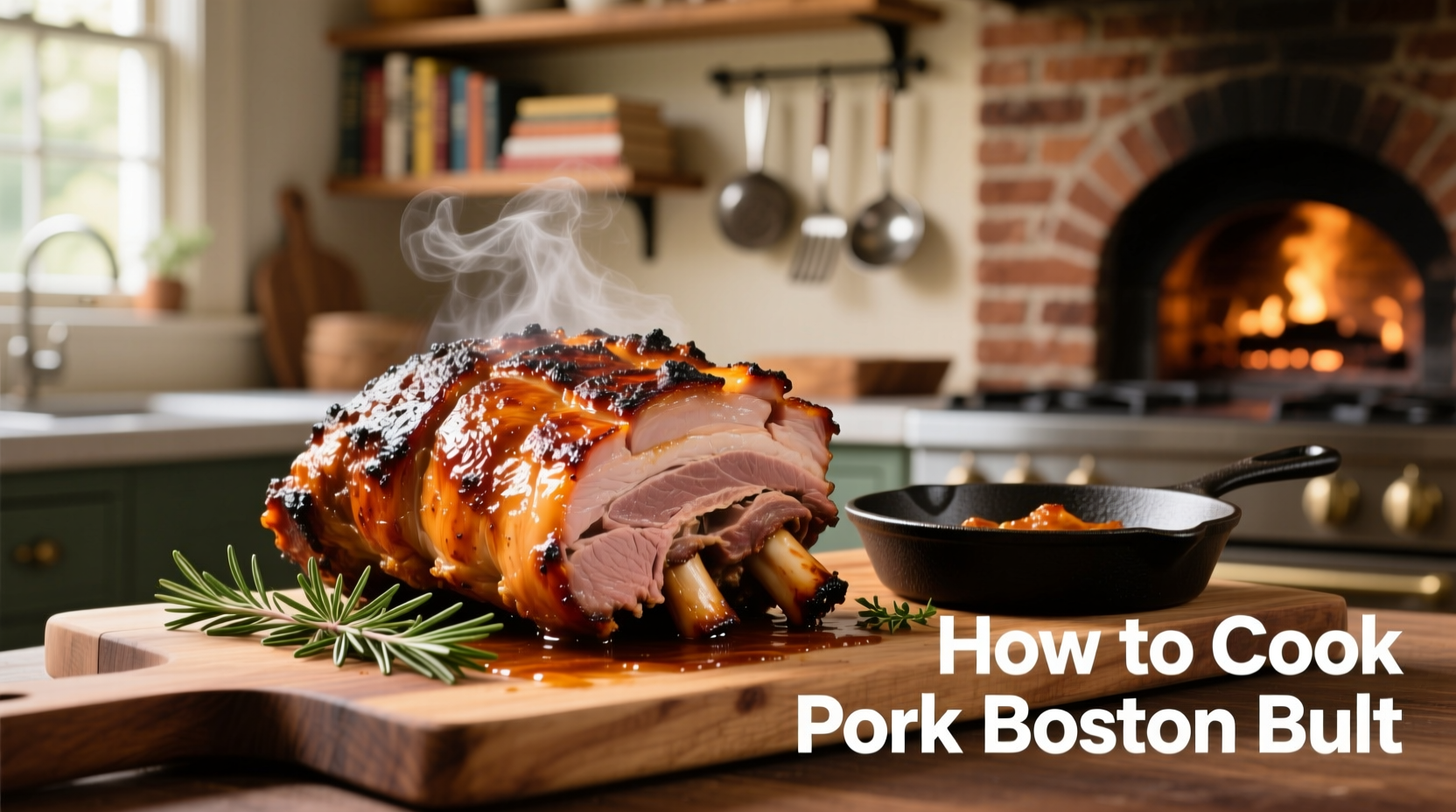Perfectly cooked pork Boston butt delivers tender, flavorful meat that pulls apart effortlessly. This comprehensive guide reveals exactly how to cook pork Boston butt to succulent perfection using oven roasting, slow cooking, or smoking methods—with precise temperatures, timing, and pro techniques for guaranteed results every time.
Confused by the name? Despite "Boston" in its title, pork Boston butt actually comes from the pig's shoulder, not the rear. This well-marbled cut contains abundant connective tissue that transforms into melt-in-your-mouth tenderness when cooked low and slow. Understanding this cut's unique properties is the first step to mastering it.
Why Boston Butt Excels for Slow Cooking
Boston butt (also called pork shoulder or picnic roast) contains approximately 30% fat marbling and substantial collagen. When heated to 160°F (71°C), collagen begins converting to gelatin—a process that continues until 205°F (96°C), creating that signature pull-apart texture. The USDA Food Safety and Inspection Service confirms pork is safe to eat at 145°F (63°C), but Boston butt requires higher temperatures for proper texture transformation.
Essential Preparation Techniques
Proper preparation sets the stage for success:
- Trim excess fat: Leave ¼-inch fat cap for flavor and moisture
- Dry brine: Apply ½ teaspoon kosher salt per pound 12-24 hours before cooking
- Rub application: Massage seasoning into meat 1 hour before cooking
- Temperature equalization: Bring meat to room temperature before cooking
Professional chefs like Antonio Rodriguez emphasize that "dry brining creates superior flavor penetration compared to wet brines, while avoiding waterlogged meat that steams rather than sears."
| Cooking Method | Temperature | Time per Pound | Best For |
|---|---|---|---|
| Smoker/Grill | 225°F (107°C) | 1.5-2 hours | Authentic bark and smoke flavor |
| Oven Roasting | 275°F (135°C) | 1-1.25 hours | Convenience and consistent results |
| Slow Cooker | Low setting | 2-2.5 hours | Hands-off cooking |
Step-by-Step Cooking Guide
Smoker Method (Traditional Low-and-Slow)
1. Prepare smoker at 225°F (107°C) using hickory or applewood
2. Insert meat probe into thickest part
3. Smoke until internal temperature reaches 165°F (74°C) (approximately 6-8 hours)
4. Wrap in butcher paper when bark achieves deep mahogany color
5. Continue cooking until 195-205°F (91-96°C), typically 10-14 total hours
6. Monitor for the "Texas crutch" stall between 150-170°F (66-77°C)
Oven Roasting Method (Reliable Indoor Option)
1. Preheat oven to 275°F (135°C)
2. Place meat fat-side up in roasting pan
3. Cook uncovered until internal temperature reaches 195°F (91°C)
4. Baste every 2 hours with pan juices
5. Estimated cooking time: 6-8 hours for 8-10 pound cut
6. No wrapping needed—oven environment maintains moisture
Slow Cooker Method (Set-and-Forget)
1. Sear meat on all sides in hot oil
2. Place in slow cooker with ½ cup liquid (apple juice or broth)
3. Cook on low for 8-10 hours
4. Remove meat and reduce cooking liquid by half for sauce
5. Shred and return to reduced liquid for 30 minutes
The Critical Resting Phase
Never skip resting! This 45-60 minute period allows juices to redistribute. The internal temperature will rise 5-10 degrees during this time—a phenomenon known as "carryover cooking." Professional pitmasters wrap the meat in towels and place it in an empty cooler to maintain temperature while resting. Attempting to shred too soon causes precious juices to escape, resulting in dry meat.
Troubleshooting Common Issues
Dry meat: Usually caused by insufficient fat content or cooking beyond 205°F (96°C). Solution: Choose well-marbled cuts and use a reliable thermometer.
Rub not adhering: Apply mustard slather or olive oil before seasoning. The USDA Meat and Poultry Hotline recommends this technique for better rub adhesion without altering flavor.
Temperature stall: Normal between 150-170°F (66-77°C) as moisture evaporates. Resist increasing temperature—patience yields better results.
Lack of bark: Ensure proper airflow in smoker and avoid wrapping too early. Spritz with apple cider vinegar every hour during initial smoking phase.
Serving and Storage Tips
Use two forks or meat claws to pull Boston butt against the grain. For competition-style presentation, separate meat into different texture zones: burnt ends (caramelized pieces), lean slices, and fatty portions. Store leftovers in cooking juices for maximum moisture retention. Properly stored in airtight containers, cooked Boston butt remains fresh for 4 days refrigerated or up to 3 months frozen.
Pro Tips for Next-Level Results
• Inject ½ cup apple juice mixed with 2 tablespoons Worcestershire sauce for deeper moisture
• Add 2 tablespoons instant espresso powder to your rub for complex flavor notes
• Place a water pan in your smoker to maintain humidity during long cooks
• Reserve 1 cup of cooking juices for mixing with pulled pork
• Freeze leftover pulled pork in portion-sized containers with cooking juices











 浙公网安备
33010002000092号
浙公网安备
33010002000092号 浙B2-20120091-4
浙B2-20120091-4